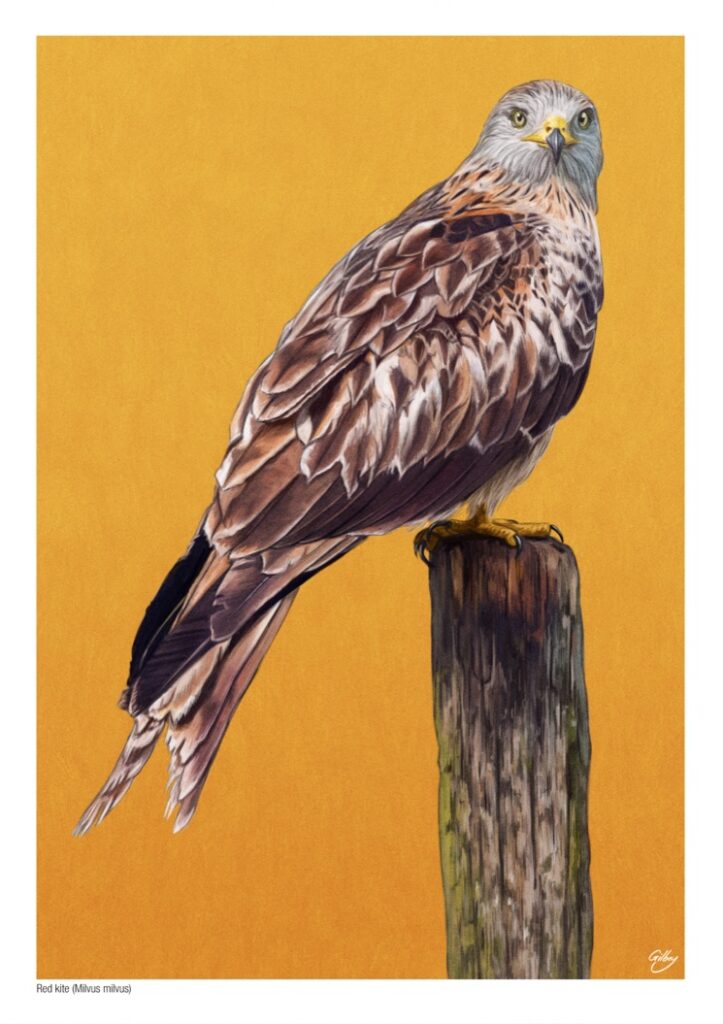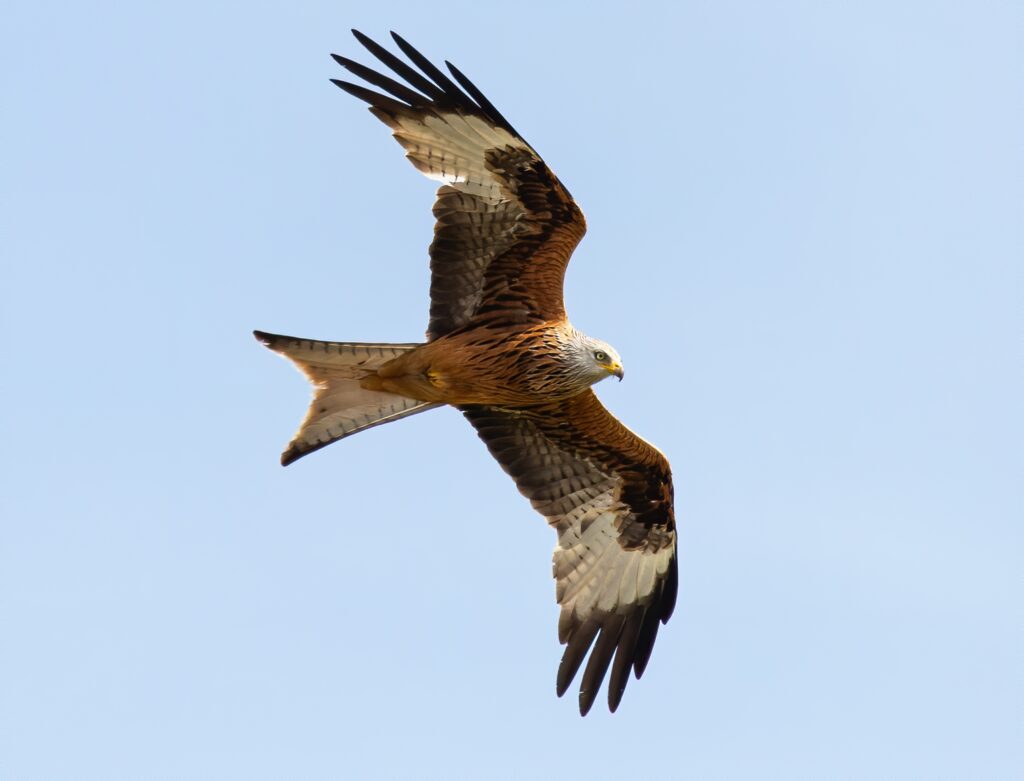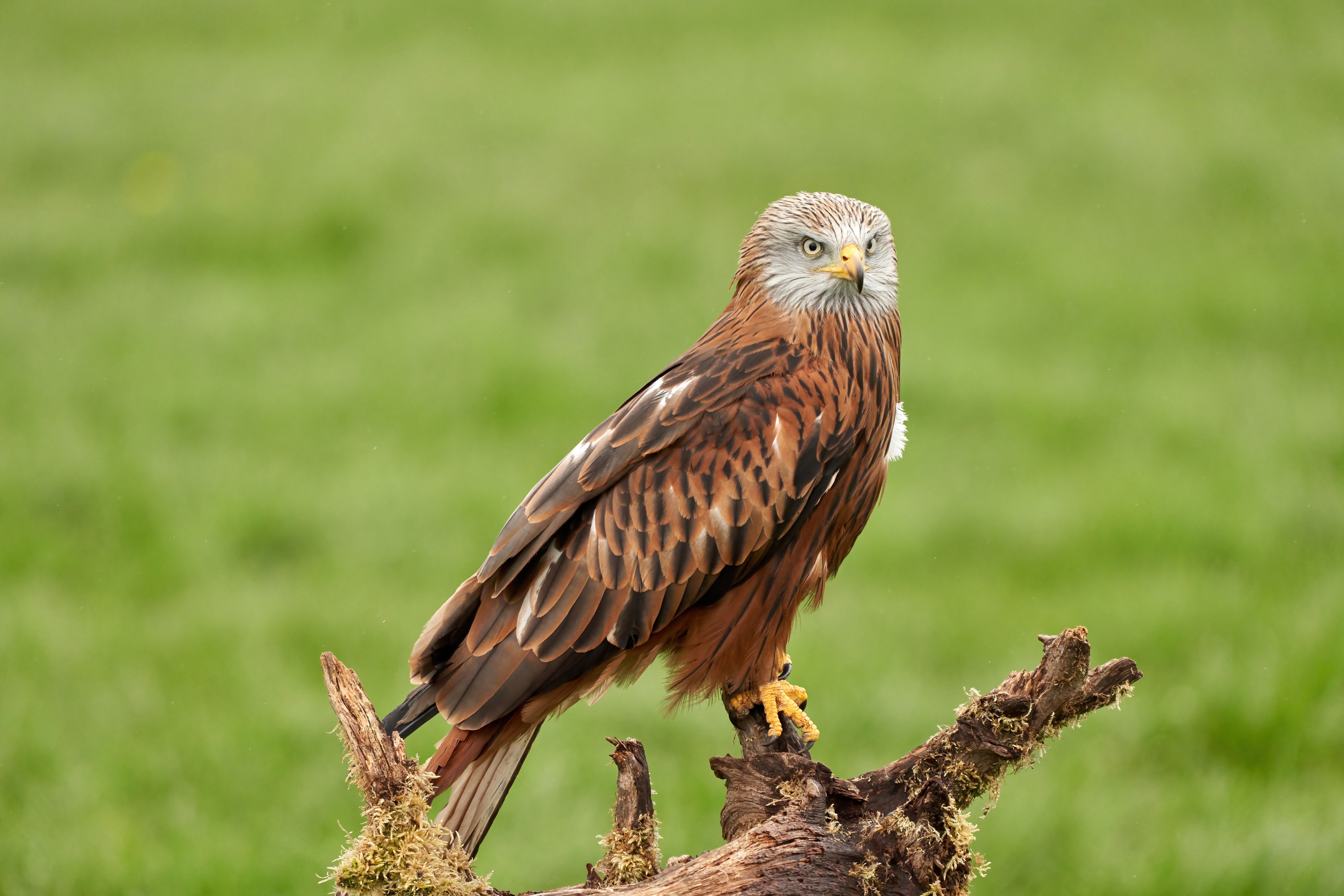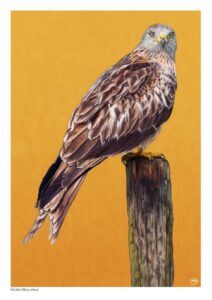Get To Know the Red Kite
The Red Kite is a bird of prey with an unmistakable reddish-brown body, angled wings, and a deeply forked tail. Once confined to Wales, the Red Kite now soars over England and Scotland thanks to the success of one of the world’s longest-running protection programmes. Starting in 1989, Spanish, Swedish, and German Red Kites were reintroduced to Scotland and England to rebuild the population.
Key Facts:
Scientific Name: Milvus milvus
Bird Family: Kites, hawks, and eagles
Diet: Mainly carrion and worms; however, they may take small live mammals.
Population: 4,400 breeding pairs
Measurements: Length: 60-66 cm/ Wingspan: 175-195 cm/ Weight: 800-1,300 g
Conservation Status and Threats
Once almost extinct in the UK, Red Kites are now on the Green list for UK conservation. Egg collectors and bounty hunters used to be the main threats to the Red Kite. Today, scavengers eating poisoned rodents represents the largest threat to their conservation.
Nesting and Breeding Habits
Red Kites make their nests high in the main fork of a tree. They can have up to 5 alternate nests in their territory. You might spot colorful rubbish decorating the nests. Starting in April, Red Kites lay a clutch of 1 to 3 eggs that are incubated for a little over a month. The young stay in the nest for 50 to 70 days before fledging.
When and Where to See Them
Red Kites can be found in broadleaved woodland across Wales, England, and Scotland. You may see them soaring above valleys, pastures, or open countryside in search of food.
Visit RSPB Tollie and several other RSPB reserves for a chance to spot this majestic bird.
How You Can Help
You can help the Red Kite thrive by using recycling programs that can decrease pollution and by supporting the RSPB.
Volunteer: RSPB Volunteering Program
Donate: RSPB Donation Page
About The Artist
Sam has been drawing for as long as he can remember, and illustrating professionally for nearly two decades. His distinctive painterly illustrations, which often feature portraits, have been featured everywhere from billboards, to comics, books and magazines, licensed prints, exhibitions, movie packaging, TV and film, and plenty more.
Portfolio: www.samgilbeyillustrates.com
Instagram: @samgilbey
About Our Partner
The RSPB is the UK’s largest nature conservation charity, working locally in the UK, and around the world. Our vision is a shared world where wildlife, wild places, and all people thrive. We act by protecting and restoring habitats, saving species, and helping to end the nature and climate emergency.
Nature is in crisis. Together we can save it.
For all licensed Products sold by Historiart, Historiart will donate a minimum of £10,000 per annum to RSPB Sales Ltd, which gives all its distributable profits through Gift Aid to the RSPB.
Manufactured under licence from RSPB Sales Limited to raise awareness of the RSPB (charity registration in England and Wales no 207076 and Scotland no SC037654).




